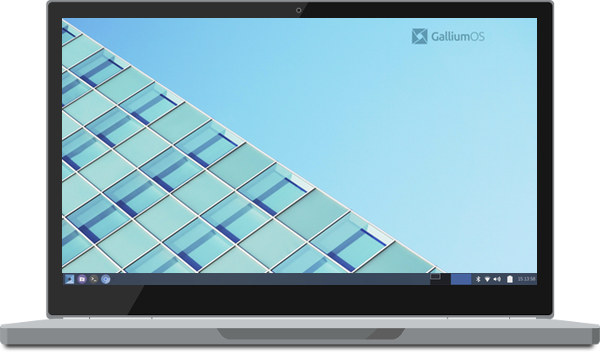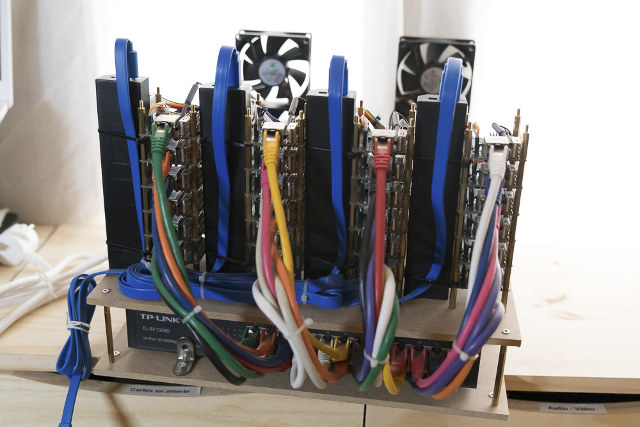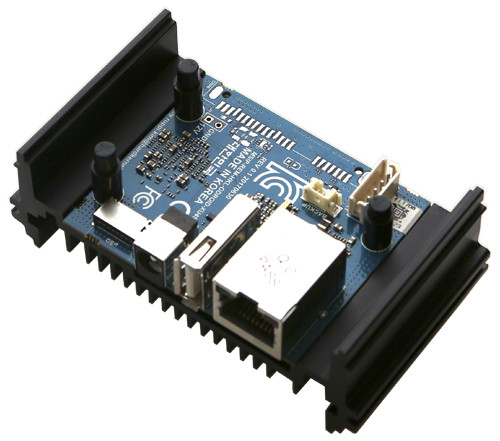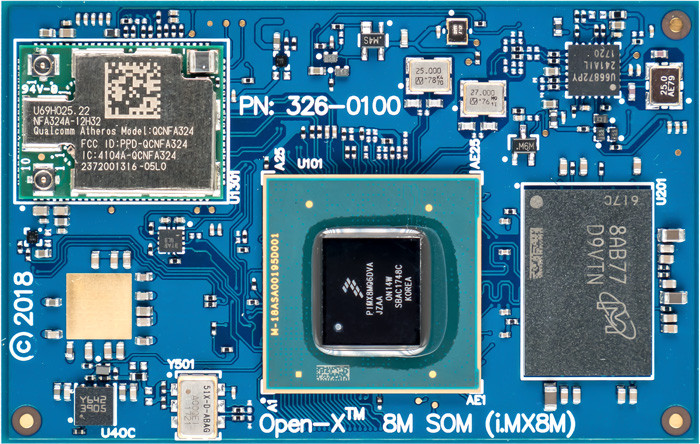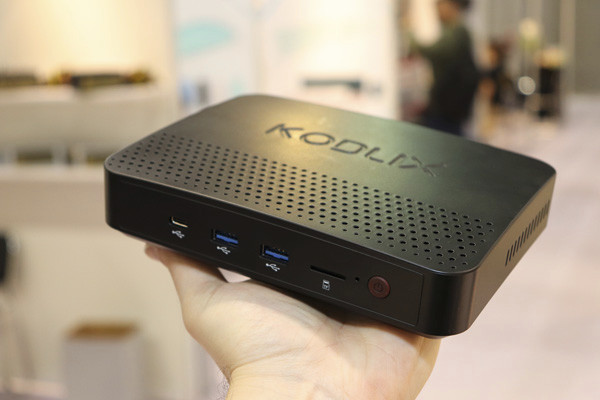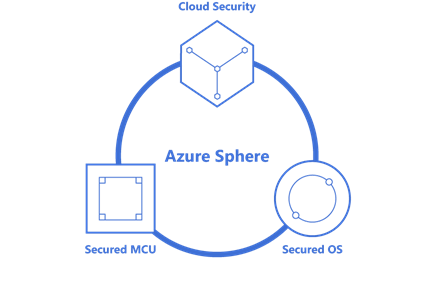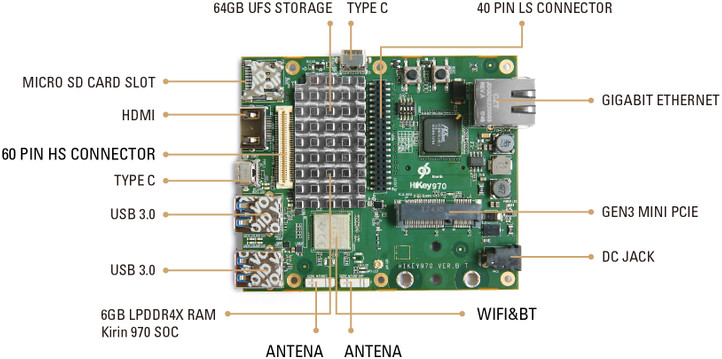When I wrote about Crostini VM to run Linux apps on Chromebooks last week, I was informed about GalliumOS, described as a fast and lightweight Linux distro for ChromeOS devices – meaning Chromebooks and Chromeboxes – that is based on Xubuntu. Compared to ChromeOS, GalliumOS – and other Linux distributions – provides the ability to run more programs and more flexibility, and GalliumOS is said to deliver improved performance, longer battery life, better touchscreen support, etc.. compared to competing Linux distributions. You can go over the Download page to retrieve an image for your Chromebook or Chromebox, and either replace ChromeOS or go for a dual boot setup. The distribution does not support any Arm Chromebooks for now, and only works with some Intel devices with or without caveats depending on the model used. Check out the hardware compatibility matrix for details. The source code can be found on Github. […]
24 Orange Pi Zero Boards Cluster and ArmWizard’s Debian Image
ArmWizard forum member “-W.-” needed a cluster to test his firmware build and deployment solution for Orange Pi Zero boards which can deploy the firmware to multiple boards from one single board. So he procured 24 Orange Pi Zero boards, a 24-port switch, some USB hubs and debug board, as well as some other accessories, power supplies, and two wooden planks. That’s the results after assembly. So we have 4 tower of six Orange Pi Zero boards fairly neatly connected to the 24-port Ethernet switch with 30 cm Ethernet cables, and four black USB hubs for the USB to TTL debug boards. The side view below shows the boards are powered by micro USB cables connected to three different power supplies, cooling achieved via four fans, and the power extension is hidden right underneath close to the Ethernet switch. The cluster will also be used for machine learning latter on, […]
Run Linux Apps in (PixelBook) Chromebook with Crostini VM
Ever since the first Chromebooks were released, it has been possible to run Ubuntu or other Linux distributions using Crouton (Chromium OS Universal Chroot Environment) on Chrome OS devices, but that requires to enable developer mode, which disables some of security features that come with Chrome OS. Google has now make it easier and safer with Crostini VM that does not require developer mode. The only downsides for now are that it only works on Google Pixelbook, and you need to install/run Chrome OS v67 dev channel with the #enable-cros-container flag enabled. Using Crostini is fairly straightforward. First start crosh terminal with Ctrl++Atl+t, and running the following command to create a VM, and launch a container:
|
1 2 |
vmc start dev run_container.sh --container_name=stretch --user=<username> --shell |
This will start a Debian Stretch environment with networking and GUI support, so you can install & run programs like you would in Debian (e.g. apt install htop). Kevin Tofel at AboutChromebooks managed […]
Hardkernel Now Offers $48 ODROID-MC1 Solo Board for Clusters
Hardkernel launched ODROID-MC1 (My Cluster One) at the end of last year with four ODROID-XU4S boards powered by Samsung Exynos 5422 processor with Gigabit Ethernet, metal cases, and a cooling fan. As the name implies it is designed for cluster of boards, but the company found out that one size (4 boards) does not fit all, so they are now offered ODROID-MC1 Solo with one ODROID-XU4S board and stackable case to provide more flexibility to their customers. Here’s a reminder of the specifications: SoC – Samsung Exynos 5422 quad core ARM Cortex-A15 @ 2.0GHz quad core ARM Cortex-A7 @ 1.4GHz with Mali-T628 MP6 GPU supporting OpenGL ES 3.0 / 2.0 / 1.1 and OpenCL 1.1 Full profile System Memory – 2GB LPDDR3 RAM PoP Storage – 1x micro SD slot (UHS-1 capable) Network Connectivity – 10/100/1000Mbps Ethernet (via Realtek RTL8153 USB 3.0 to Ethernet bridge) USB – 1x USB 2.0 […]
Intrinsyc Introduces Open-X 8M SoM and Mini-ITX Development Kit with Optional LCD Display
Intrinsyc announced their own NXP i.MX 8M system-on-module, as well as a corresponding development kit back in February 2018 for Embedded World 2018. Somehow I missed it until today when the company tweeted about the kit unboxing video, so let’s have a look, starting with the module itself.Open-X 8M SoM specifications: SoC – NXP i.MX 8M quad-core Arm Cortex-A53 processor @ up to 1.5 GHz, Arm Cortex-M4 core with 256 KB tightly coupled memory (TCM), Vivante GC7000Lite GPU System Memory – 3GB LPDDR4 RAM Storage – 16GB eMMC Flash Video – 4Kp60 HEVC/H.265 main, and main 10 decoder, 4Kp60 VP9 decoder, 4Kp30 AVC/H.264 decoder, 1080p60 MPEG-2, MPEG-4p2, VC-1, VP8, RV9, AVS, MJPEG, H.263 decoder On-module Connectivity – WiFi 802.11a/b/g/n/ac 2.4/5.0 GHz 2×2 MU-MIMO + Bluetooth 4.1 pre-certified module 3x 100 pin board to board connectors exposing: Display Interfaces HDMI 2.0a up to 4096 x 2160 at 60 Hz 4-lane MIPI […]
KODLIX Mini PC Comes with Celeron N4000/N4100 or Pentium Silver N5000 Gemini Lake Processor, Supports Up to 16GB RAM
Gemini Lake mini PC announcement keep on coming, with the latest from Plater Electronics which showcased their KODLIX Gemini Lake mini PC at the Hong Kong Electronics Fair 2018. What makes this model interesting is that beside the usual Celeron N4000/N4100 dual/quad core processor, it also offers the most powerful yet less common Pentium Silver N5000, and support for up to 16GB RAM via two SO-DIMM slots despite competitors and motherboards manufacturers claiming a maximum of 8GB on their Gemini Lake hardware, even two memory slots are available. Specifications: SoC Intel Celeron N4000 dual core processor @ 1.10/2.60 GHz with Intel UHD Graphics 600; 6W TDP Intel Celeron N4100 quad core processor @ 1.10/2.40 GHz with Intel UHD Graphics 600; 6W TDP Intel Pentium Silver N5000 quad core processor @ 1.10/2.70 GHz with Intel UHD Graphics 605; 6W TDP System Memory – 2x DDR4 or LPDDR4 SO-DIMM slots up to […]
Microsoft Introduces Azure Sphere OS Linux Operating System for Certified Microcontrollers (MediaTek MT3620 for now)
Last year, Microsoft announced they were working with Mediatek on Project Sopris Secure WiFi MCU, based on Mediatek MT7687 MIPS microcontroller with 7 properties enhancing security (Hardware-based Root of Trust, failure reporting etc…). The company has now unveiled a complete secure IoT solution with Azure Sphere comprised of three main components: Azure Sphere certified secured MCUs which combine real-time and application cores with built-in Microsoft security technology and connectivity. The first compatible MCU will be Mediatek MT3620, which differs from MIPS based Project Sopris, as it features one Cortex A7 and two Cortex M4 cores as well as WiFi connectivity. Azure Sphere OS that provides four layers on top of the hardware: security monitor, custom Linux kernel, on-chip connectivity services to Azure Sphere Security Service, and app containers for computer (A7 core) or/and real-time I/Os (M4 cores). Azure Sphere Security Service, a secure cloud service for Azure Sphere device that […]
Hikey 970 Development Board is Now Up for Pre-order for $299.99
Four A.I. development boards compliant with 96Boards specifications were announced at Linaro Connect HK 2018 last month: HiKey 970, Ultra96, as well as ROCK960 PRO & Enterprise Edition. So for we only knew pricing for Ultra96 ($249), but I’ve now noticed Hikey 970 “Super Edge AI Computing Platform” is now up for pre-order for $299.99 on Lenovator website, with shipping planned for the end of April. [Update: Also found on Seeed Studio for the same price] Hikey 970 specifications: SoC – Huawei/Hisilicon Kirin 970 with 4x Cortex A73 @ 2.36GHz, 4x Cortex A53 @ 1.8GHz, Arm Mali G72-MP12 GPU, NPU (Neural Processing Unit) with 256MAC/cycle @ 960MHz System Memory – 6GB 1866MHz, 4 Channel LPDDR4x Storage – 64GB UFS storage, micro SD card slot, PCIe Gen3 on M.2 M key connector Video Output – HDMI 1.4 type A up to 1080p60 (TBC), 1x 4-lane MIPI DSI (via HS expansion connector) […]


